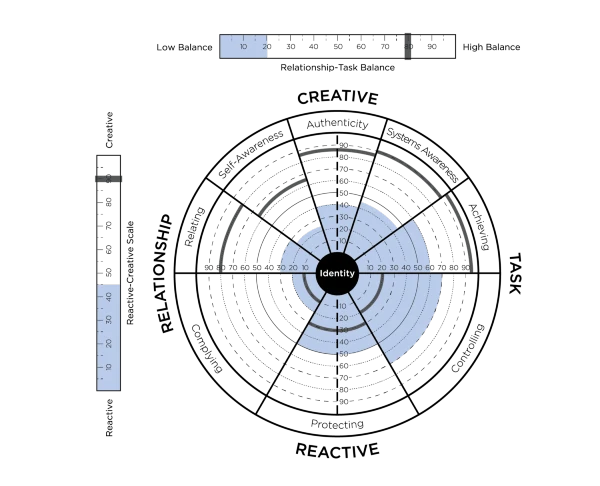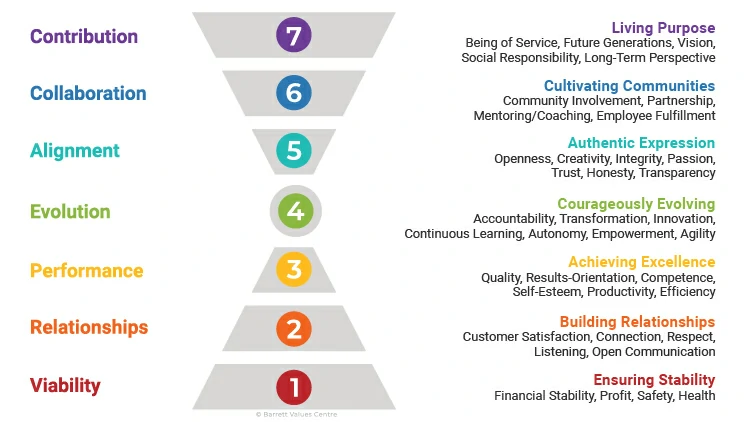© 2024 · Transformlink · Privacy Policy · Terms of Use
- Grand Slipi Tower 5F; Jl S Parman kav 22-24 Jakarta 11480
- info@transformlink.com
- (+62) 812-1255-7296
The beacon in organizational complexity.
It unveils patterns, guides change, and taps into collective wisdom.
With it, we navigate with clarity and shape the future with purpose.
In the realm of modern organizations, cultivating creativity, growth, and engagement hinges on understanding and addressing the symptoms of systemic entanglements which led to dysfunctions, repeating problems, or ineffectiveness. Uncovering intrinsic elements and hidden dynamics within the organizational system is essential for leaders seeking to foster a climate and culture conducive to sustained success.
In today’s complex and ever-evolving business landscape, organizations often face challenges that seem resistant to traditional solutions. If you find that familiar patterns keep repeating, conflicts persist, or change efforts don’t yield sustainable results, it may be time to consider a systemic intelligence approach.
When is Systemic Intelligence Needed?
If any of these situations sound familiar, your organization may benefit from deploying systemic intelligence. Our approach is designed to uncover hidden dynamics, align teams, and foster a culture of trust, collaboration, and sustainable success.
Discover how systemic intelligence can transform your organization.
Indicators of an unhealthy organization might include high turnover, pervasive disengagement, siloed communication, and resistance to change. Such symptoms impede innovation and adaptability, compromising the organization’s ability to thrive.
Leaders need to recognize intrinsic elements hindering a healthy climate and culture, such as unresolved conflicts, hidden power dynamics, unspoken norms, and systemic imbalances. Hidden dynamics operate on an intangible level, influencing decision-making, relationships, and overall organizational health. Leaders who overlook these forces risk perpetuating detrimental patterns and limiting the organization’s potential.
Systemic Intelligence unveils the interconnectedness of individuals, teams, and the broader organizational system. It provides a profound understanding of hidden dynamics and equips leaders with tools to visualize and explore these hidden dynamics. By doing so, it identifies underlying issues, unearths systemic imbalances, and sheds light on conflicts hindering progress.
Using Systemic Intelligence, leaders can navigate the intricacies of the organizational system by acknowledging interconnectedness and understanding how hidden dynamics impact decision-making and team dynamics. Leaders who embrace this approach create an environment where individuals feel empowered, conflicts are resolved constructively, and the organization thrives.

In the realm of modern organizations, cultivating creativity, growth, and engagement hinges on understanding and addressing the symptoms of an unhealthy environment. Uncovering intrinsic elements and hidden dynamics within the organizational system is essential for leaders seeking to foster a climate and culture conducive to sustained success.
Change initiatives abound, yet a staggering 70 percent falter, often due to overlooking crucial aspects of human and organizational behavior.
At Transformlink, we step in when organizations strive to reshape their culture, rediscover purpose, embrace agility, foster innovation capabilities, or embark on radical transformations. As seasoned co-creators, we forge a close alliance with our clients, jointly identifying the pivotal behavioral shifts essential for human-centered transformation, ensuring lasting and sustainable change.
We apply a diverse set of diagnostic instruments to help map the existing culture. From the Collective Leadership Assessment (CLA) and Cultural Transformation Tools (CTT) to Systemic Intelligence, Stage Development Mapping, and Theory U, we uncover existing elements impacting organizational health and performance.
With our holistic approach, we don't just address isolated components; we orchestrate comprehensive transformations in purpose, culture, leadership, and capabilities. Explore the transformative journey with us and witness the seamless implementation of change that propels your organization towards unparalleled success.

In embarking on a culture change program for our organization, we recognize that change begins with what can be perceived, felt, or seen. Understanding this, we start by mapping out the culture as a constellation of values within our organization. This involves identifying the values that are currently practiced, those that are aspired to, and the values demonstrated by both leaders and employees. Through this mapping process, we gain a clear picture of where the organization stands culturally.
It’s crucial to understand that organizations don’t change people; people change organizations. Therefore, our focus lies in fostering awareness among individuals regarding the collective perspectives within the organization. This awareness serves as the foundation for cultural shift. As leaders, we must acknowledge the truth as felt by all members of the organization, creating a field of safe space where open dialogue and expression are encouraged. Here, the alignment of intention with attention begins, paving the way for new possibilities in behavior and action.
Culture shift occurs through incremental changes in behavior that eventually snowball into significant transformations. As we roll out these changes, it's essential to maintain momentum and ensure that leaders are equipped to sustain it. Through ongoing learning and support, leaders will cultivate the skills necessary to anchor new patterns of behavior, foster a collective attitude of growth, and ultimately elevate organizational performance.
This program isn't just about changing the culture; it's about fostering a culture of unlearning, embracing, co-creating, and empowering for all members of the organization.
The Collective Leadership Assessment (CLA) delivers a powerful litmus test of collective leadership effectiveness for teams or entire organizations. It provides a comprehensive view of where employees perceive the current collective leadership effectiveness compared to the desired collective effectiveness.
The Collective Leadership Assessment provides an affordable, web-based, and user-friendly insight into your culture as influenced by collective leadership. Results are downloadable for immediate access.
With the Collective Leadership Assessment, you can conduct a thorough and valid assessment of the impact that collective leadership has on your culture. CLA provides you the ability to choose whether you want to assess organizational culture, business unit culture, or team culture.

Cultural Transformation Tools (CTT):
Powerful metrics that enable leaders to actively measure and manage cultures.
Make it possible to translate qualitative data into quantitative data.
Provide a baseline measurement instrument for monitoring changes in the organizational culture.
Provide a method for measuring cultural capital.
“The true values of a leader are not measured by the work they do. A leader’s true values are measured by the work they inspire others to do.” (Simon Sinek)

“Top team alignment is the synchronized synergy of leaders converging energies and focus, continually renewing, realigning, and shifting.
Together, they coordinate, motivate, and share insights to excel in execution, while sensitively attuned to emerging trends.
Embarking on an internal journey of development, they unite individual depth with collective strength, adapting and evolving in unison.
In essence, it’s about becoming more together.”
In the dynamic landscape of organizational transformation, one truth stands out: organizations don’t transform, people do.
At the heart of this journey lies top team alignment. Our program is designed to catalyze this alignment by first recognizing that culture transformation begins with the top team. They serve as the guiding light, leading by example and setting the tone for the entire organization’s evolution.
When the members of the top team are not in sync, it's akin to a symphony playing off-key. Each individual's strengths should complement the others, not cancel them out. Our program identifies and resolves discrepancies, ensuring that every member's contribution harmonizes to create a powerful ensemble effect, propelling the organization forward.
Organizational energy flows where the top team's attention goes. Our program aligns the focus and intentions of your top team, directing this energy towards the organization's goals. By fostering coherence between the team's actions, organizational values, and strategic priorities, we ensure a seamless flow of progress, moving in rhythm with the organizational pulse.
A cohesive vision acts as a magnetic force, drawing the organization towards its desired future. Through our program, we facilitate the alignment of your top team around a shared vision, fostering strategic clarity and unity of purpose. This shared vision not only guides present actions but also serves as a beacon for future endeavors, driving the organization towards continued success.
In today's rapidly changing environment, adaptability is paramount. Our program doesn't just align your top team for the present, it equips them with the tools and mindset for continuous renewal. Together, we'll ensure that your organization remains agile and responsive to change, ready to thrive in the face of uncertainty. Unlock the potential of your organization through the power of top team alignment. Let's embark on this transformative journey together.


TO WORK ALONGSIDE LEADERS EXPANDING CONSCIOUSNESS
AND CREATING WHAT MATTERS MOST FOR THE WORLD.
© 2024 · Transformlink · Privacy Policy · Terms of Use